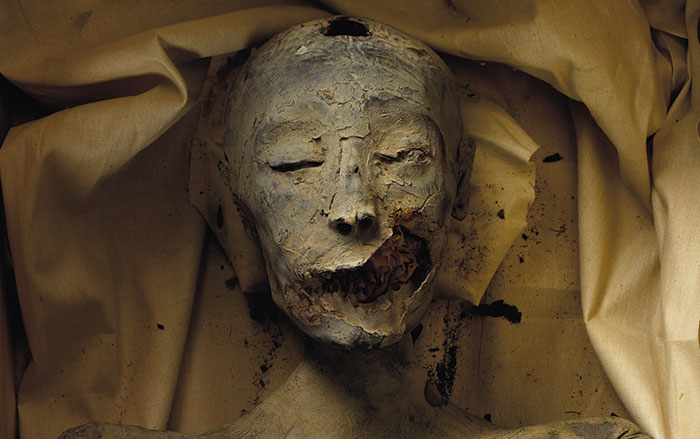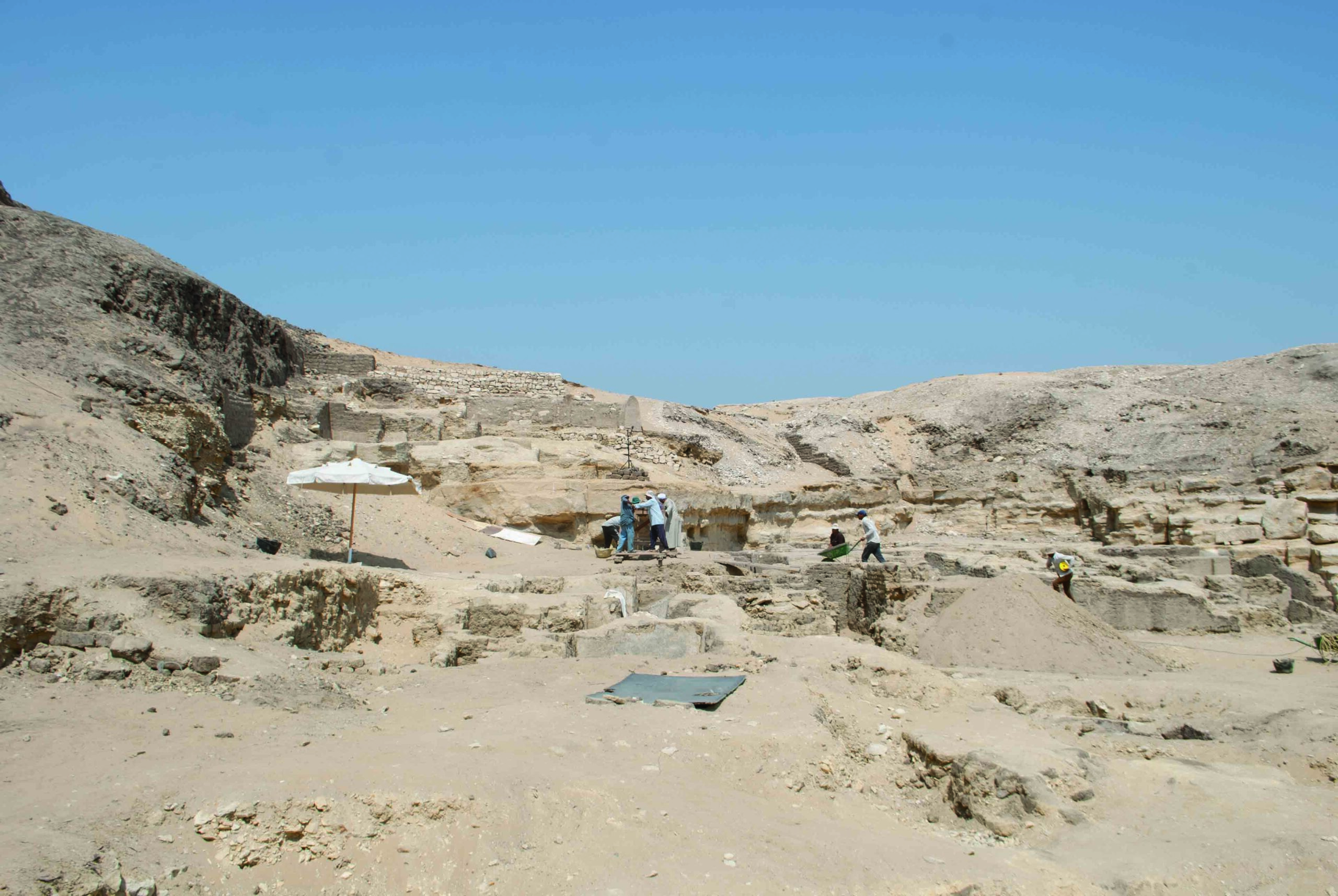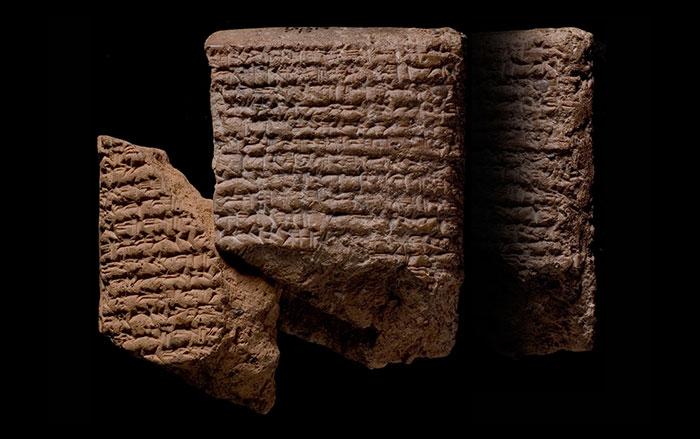
PERTH, SCOTLAND—Conservators at Perth Museum and Art Gallery found paintings of Imentet, an Egyptian goddess who welcomed the dead to the afterlife, inside the lid and the base of a 3,000-year-old coffin belonging to Ta-Kr-Hb, a priestess or princess of Thebes, according to a report in The Scotsman. The mummy and its coffin were donated to the museum in 1936. “We had never had a reason to lift the whole thing so high that we could see the underneath of the trough and had never lifted the mummy out before and didn’t expect to see anything there,” explained museum collections officer Mark Hall. The painting at the bottom of the coffin shows the goddess, who was mentioned in the Book of the Dead and was sometimes known as “She of the West,” wearing a red dress and standing on a platform with her arms slightly outstretched. A pole or column, probably a support for the platform, is also shown in the image. Hall and his colleagues rewrapped the mummy to stabilize it and preserve the coffin. The examination will also help the researchers to determine how the mummy was impacted by grave robbers in antiquity and collectors during the Victorian era. To read about the first archaeological evidence for conical headpieces often worn by figures in Egyptian art, go to "Egyptian Coneheads."











